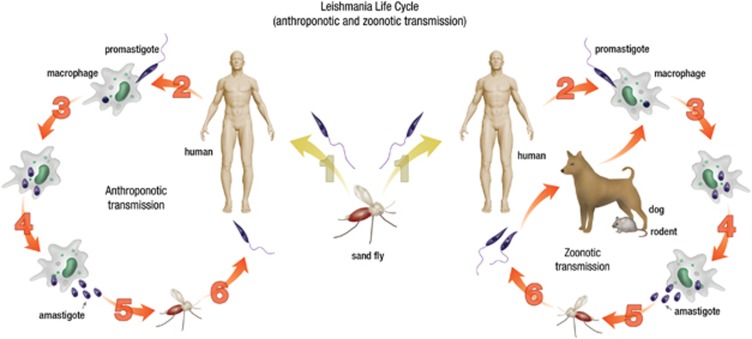Figure 1.
Life cycle and transmission of Leishmania parasites. The promastigote form of Leishmania parasites responsible for human disease (VL, CL and MCL) are injected into the skin as a female sand fly takes a blood meal (1), and are then taken up by host macrophages (2). Promastigotes convert to the non-flagellated, amastigote form inside macrophages (3) and then divide by binary fission (4). The amastigotes are released by the rupture of macrophages (5) and can then be taken up by a female sand fly during another blood meal. The amastigote form then converts in the promastigote form in the midgut of the sand fly and can then again be transmitted to another human (anthroponotic transmission) or to animals that act as reservoirs (zoonotic transmission) (6).

